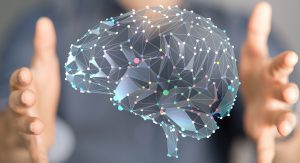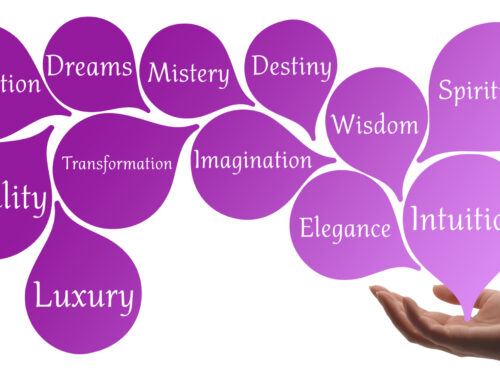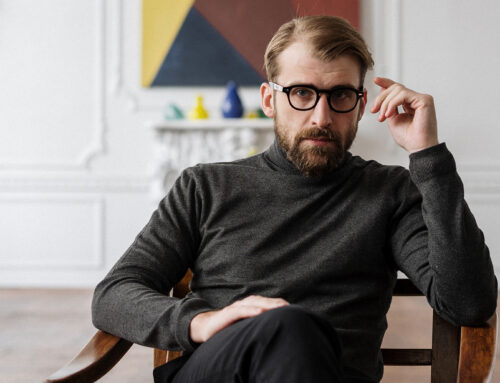
Quantum psychology represents the bringing together of eastern philosophies and quantum physics, integrated into western psychology. Developed by Dr. Stephen Wolinsky during the latter part of the 1980’s it provides a novel framework for our understanding and treatment of psychological disturbance.
The core principles that differentiate Quantum Psychology from modern psychotherapy:
Psychotherapy is based on the principles of Newtonian physics:
everything could be reduced down to small units, acting and reacting upon one another, in a cause-and- effect measurable, predictable pattern.
When these principles are translated into psychotherapeutic assumptions, each person is viewed as a separate entity unto itself, who is clearly disconnected from every other person, object, structure, or form, and who goes through the day experiencing a linear series of stimulus-response, cause-and-effect relationships.
Unity consciousness is not discussed, human functioning is viewed as a complex string of stimulus-response pathways.
When consciousness is admitted as an operative concept, it is seen as something to be altered, reframed, cured, changed, or healed.
Consciousness is taught to solve problems in itself by identifying cause-and-effect relationships that explain and then hopefully change the problematic dynamic.
The most forms of therapy focus on helping the client to become a “whole” person and integrating “ parts” of an individual.
in contrast
Quantum Psychology expands the context of whole personhood to include the rest of the universe, you no longer experience yourself as “separate from “ or “ a victim of”.
Quantum approaches to psychotherapy create levels of understanding that lead one to experience interconnection as the context rather than conflicting parts..The goal is to experience the common underlying interconnectedness throughout all responses.Once the larger context is experienced, the specific responses begin to lose their definition and their significance.
It is for these reasons that the quantum approach does not emphasize integrating the false selves of early childhood, it is not concerned with reframing trauma into resource and it does not reprogram beliefs.
Quantum psychology is interested in the you that is there beyond all the parts, all the traumas, all the false selves.
The pure experience of Quantum Consciousness is not about integrating anything; is is about recognizing and experiencing the underlying unity- the underlying absence or interconnection of all parts.
This experience of unity is where the true wholeness can be experienced and this is the space where problems disappear and you emerge.
Quantum approaches identify problems as caused by the sense of separation and provide experiences of underlying interconnection.
Principles of Quantum Psychology
Reality is created by observation.
There is no reality in the absence of observation. In order to observe something we have to create a representation of it in our minds. If it is not observed it does not exist in our reality.
Everything in the physical universe must be composed of energy, space, mass and time.
Everything has mass (even thought and emotion) which on a fundamental level is composed of energy. For it to exist it must have space and time (a beginning, middle and end) in which to exist.
Perception will label our thoughts and feelings as either good or bad.
Quantum psychology states that if we can move the mass (symptom) from its space or alter the time in which it is experienced then the symptom will collapse.
Everything interpenetrates everything else. Reality is an undivided wholeness.
Taken from the eastern concept of Yin and Yang (light/dark, male/female, positive/negative). Two terms that are applied to this concept and used within quantum psychology are implicit order and explicit order.
Implicit order: this is what unites the universe; the empty spaces between objects. For example, the empty spaces between thoughts.
Explicit order: these are the object (thoughts, for example) that are contained in the universe.
Everything is made of emptiness. Form is condensed emptiness.(Einstein)
This further qualifies the principle that reality is an undivided wholeness. Essentially everything is made of the same substance (emptiness) and is referred to as the Quantum Level.
Yogic texts refer to this as samadhi and Zen Buddhist texts refer to it as satori.
By taking in concepts from chaos theory, the aim of quantum psychology is to achieve a momentary experience of this quantum level (called quantum consciousness) in order to allow the conscious mind to regain order out of the chaos that has created the neurosis.
Chaos Theory and Neurosis
On a simplistic level, chaos theory states that all life is chaotic (i.e. without order). As human beings we have an aversion to this chaotic state as it brings about a sense of loss of control. In order to resist these feelings and to provide order out of chaos we create elaborate psychological and spiritual systems that allow us to make sense of what is happening, creating internal explanations of external realities. In psychological terms it has been suggested that the primary function of the nervous system is to provide order to chaos.
Chaos theory hypothesises that neurosis arises when our ability to create order out of chaos fails and we are plunged into a state where we perceive that we have lost control. The immediate reaction is to clamp down, tighten our muscles and attempt to make it go away.
One of the prime concepts of chaos theory is that the underlying order of everything is chaos. In other words, no matter how ordered a system appears its foundations are based in chaos.
With this in mind Dr. Ernest Rossi theorized that the unconscious mind was in a constant state of chaos and that the conscious mind evolved to provide order to this chaotic unconscious. At times our limited and rigid belief patterns that help provide order can no longer adapt to the chaotic material being processed. When this happens the conscious mind can no longer create order and is itself thrown into a state of chaos.
Put simply, the conscious mind attempts to maintain a state of equilibrium with material contained in the unconscious mind. When it can no longer do so we enter into neurosis.
Further Principles of Quantum Psychology
Of prime interest to hypnotherapists is the concept that we spend our days in a continuum of trance states, some of which we label as pleasant and some we label as negative. Each of these trance states has three core characteristics:
1) a narrowing, shrinking, or fixating of attention
2) they are experienced as happening to the person
3) they exhibit various hypnotic phenomena.
- Age regression
- Posthypnotic suggestions
- Pseudo-orientation
- Time distortion
Quantum psychology suggests that patients presenting for treatment have come to therapy because they are experiencing negative trance states – known as symptomatic trances. It is the role of the therapist to shift, interrupt or alter this state so that the patient can resolve their symptom.
Hypnosis and Quantum Psychology
Wolinsky (1991) holds the paradoxical view that if we spend our days experiencing a continuum of trance states.Hi refer to all states of consciousness( other than the uninterrupted awareness of the observer) as a trance state.
Trance states are related to the flow of consciousness.A symptom can be a problem if there is some kind of trans.
When we enter into a state of hypnosis we are in fact entering what he calls a no-trance state whereby a person’s observations and perceptions can flow unobstructed. Once in this state we can deconstruct and relieve symptoms caused by the symptomatic trance.
As each trance is released, the problem loses the ability to repeat itself.
Chaos theory states that it is often the conscious mind’s rigidity that prevents our patients from resolving their own problems (symptomatic trances). Hypnosis is thought to be a means by which we can dilute this rigidity through entering the no-trance state and allowing the conscious to return to a state of order by creating new strategies for dealing with the chaotic unconscious material.
For the past 40 years or so, the Chaos Theory has been imported from the mathematics of non-linear systems. As it has developed over the years it has been increasingly applied to the understanding of unpredictable behaviours exhibited by various complex systems. These include not only the behaviours of the human being, but also behaviours of the weather , etc. For therapists however, Chaos Theory provides a model which helps to explain why we as human beings experience neurotic states.
The theory proposes that the conscious mind exists to create order from a chaotic unconscious. When it fails to do so, the nervous system responds in a negative or non-constructive way. It is this non-constructive response which forces the patient to seek help externally from a therapist, in order to help them return to a state of order.
The Force of Silence
Here below an exercise that help you to experience a quantum level of your body.
Our awareness interacts with the subatomic realm of our body. As an individual seeking resolutions to inner problems, you must accomplish what science have not yet accomplished. You must seek help not only from the domain of biomedicine, but also by exploring the deepest dreaming and quantum levels of your body. At these levels, you will meet what Arnold Mindell in his book ” THE QUANTUM MIND and HEALING” calls: THE FORCE OF SILENCE, your body’s intelligence and link to the universe
While mainstream science focuses on measuring the effects of zero-point energy in the universe and debates whether or not subtle energy fluctuations gave rise to the origins of the universe Mindell suggest a meditation on how the smallest inklings of awareness create our lives in terms of what hi calls The Force of Silence. In his book hi discussed how these inklings are ”tendencies” seen in quantum physics, psychology, and meditation.
Self-reflecting patterns found in the math of physics- the basis of quantum theory – can be seen as metaphors for how the force of silence creates consciousness, reality, and all life’s problems, joys , and symptoms.Further, these tendencies are linked to the universe’s self- reflecting ability as well as to our own.
To understand what the force of silence represents, here an example of exercise:
IMAGINARY TIME EXPERIMENT
Let’s begin with your body awareness.
To begin with sit, stand, or lie in a position giving your body some freedom to move. If you are sitting, sit on the edge of your chair, if you are lying down, sit up a bit.
Now relax for a moment in your position. Take a couple of deep breaths. Don’t rush.
When you feel more at ease and a bit quieter, you are ready to go on. While breading freely and naturally, hold your body relatively still.
Use your awareness to notice the kind of motion and direction your body might tend to move in if it were allowed.
Don’t move yet in that direction, just explore the tendency to move in a given way or direction.
Give yourself time.
The tendency will eventually show itself.
Now, notice that tendency and its direction, even if this tendency seems unusual to you. Once you notice it, allow that tendency to move your body slowly in that direction.
Take note of images which may arise. Take your time.
What fantasies and images arise as you move?
Still moving slowly, follow your imagination about that movement until your inner images give you a sense of the movement’s meaning.
What could your tendencies, fantasies, and movements possibly mean for you ? What meaning do they seem to have for you?
Trust your intuition about the meaning.
Focus your awareness on that possible meaning and make a note of it.
The force of silence appears not only in your body’s subtle movement tendencies , but also within
– your chronic symptoms
-your long-term behavioural patterns, problems, and gifts
– the moods and people that trouble you most, and also
your relationship troubles or community problems
Personally doing this exercise I discovered where my issue with itching hands en feet come from and also my spiritual gift.
Just try and let me know your experience.
Enjoy!
Reference:
A.Mindell, Ph.D: The Quantum Mind and Healing
How to listen and respond to your body’s symptoms
Trances People Live
Stephen Wolinsky
Quantum Consciousness
Stephen Wolinsky
The Tao of Chaos
Stephen Wolinsky
The Dark Side of the Inner Child
Stephen Wolinsky





